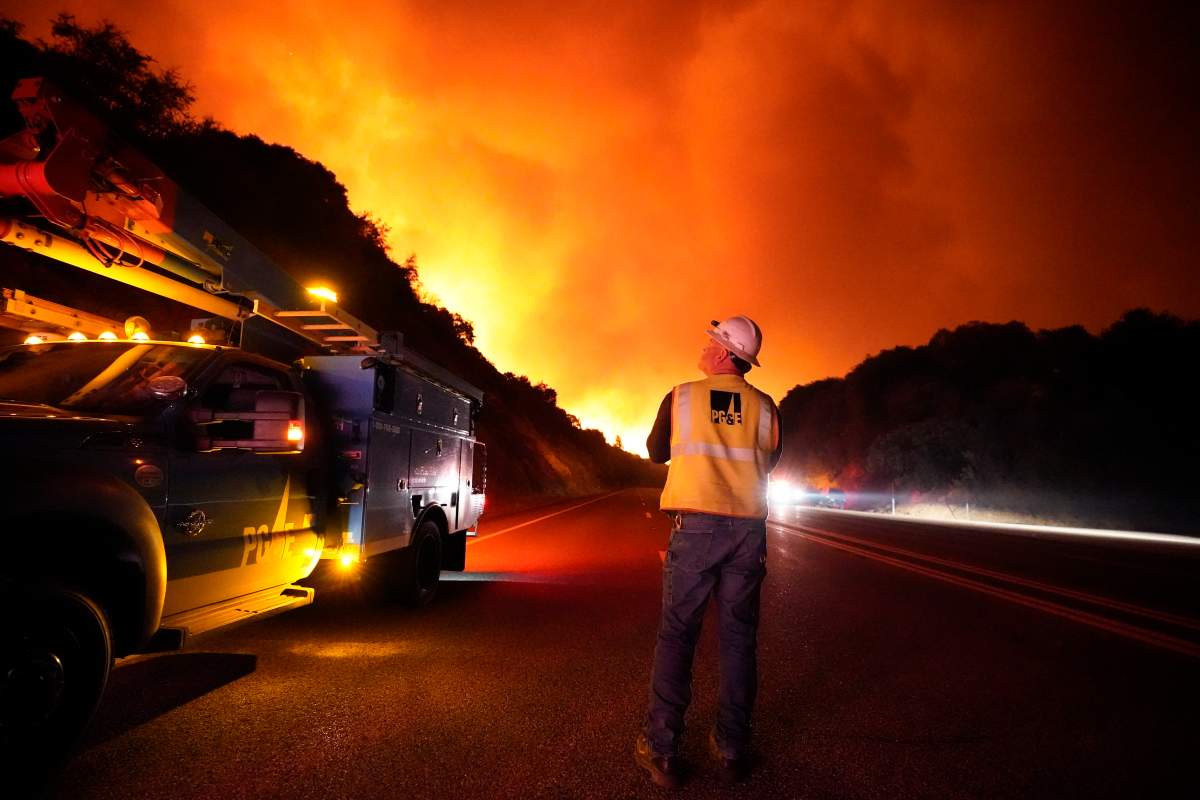As smoke from the wildfires burning in the United States blankets western Canada — bringing low visibility and air quality advisories — Environment Canada says Manitoba will likely be spared the problems currently facing British Columbia, Alberta, and parts of Saskatchewan.

But that doesn’t mean the smoke isn’t blowing our way.
“Believe it or not it is here, but it’s aloft,” Environment and Climate Change Canada meteorologist Eric Dykes told Global News Monday.
“It’s giving us the kind of hazy skies we’re seeing around southern Manitoba today — if we didn’t have the haze it would actually be very, very sunny.”

Smoke from fires burning in Washington, Oregon and California have made their way over southern parts of the three western provinces over the last few days, affecting air quality and bringing air quality advisories and warnings from officials to stay indoors.
And while Dykes said satellite imaging shows the smoke is already streaming from Canada’s west coast over most of southern Alberta, Saskatchewan, Manitoba, and into the Lake Superior region of Ontario, he says it’s too high above us to cause serious issues in southern Manitoba.
“All these fires, and all the smoke that’s emanating from them is going straight up into the atmosphere at the source,” he explained.
“That smoke at some point is getting caught in the upper-level wind pattern, and that upper-level wind pattern then takes it and shunts it and translates it downstream.
“Fortunately it’s not projected to surface, reduce visibility and cause respiratory issues here.”

Get weekly health news
Dykes said he expects the smoke will continue to be aloft over southern Manitoba — causing hazy skies but not reducing visibility or causing respiratory issues — until Wednesday morning, when a northern cold front is expected to blow it down south again.
“If we were living closer to the source region of the fires, it would be different story,” he said.
“We’re fortunate, in a sense, that we’re only starting to see the smoke today. It’ll last for a day or two, and then it gets moved out by this cold front.”

Dykes said it’s looking like Manitoba will continue to dodge the troubles caused by the smoke into next week, too — at least compared to what provinces to the west of us are seeing.
“By the weekend, it looks like the upper-level wind flow will change direction, and that will help clear out all that smoke — hopefully — for those folks out west of us, as well,” he said.
“And that also means it’s going to be moving in a direction not towards southern Manitoba, as well. So for the next little while we’re going to get through a couple days of hazy skies here in southern Manitoba, and then we get into more clearing and blue skies, and colder temperatures.”
That’s good news for anyone with allergies, Dykes notes.
But as fall approaches, allergy sufferers aren’t in the clear here either, says Winnipeg-based allergist and immunologist, Dr. Chrystyna Kalicinsky.
Kalicinsky told 680 CJOB Monday those with allergies are facing a rise in outdoor molds right now, and soon the smoke from farmers burning fields will be a factor too.

“Any kind of smoke is an irritant to the lining of the nose, eyes, and lungs, especially to those people that already have allergies,” she said.
“And then, of course, you’ve got the common colds and … that often shows itself up in early fall when the kids go back to school.”
With the similarity of common allergy symptoms and those of COVID-19, Kalicinsky said it’s important to keep a close eye on those symptoms.
“There’s a definite overlap with things like runny noses, stuffy noses — we’re told that even mild cold-like symptoms can be signs of COVID-19,” she said.
“If there’s anything different — a person all of a sudden happens to develop allergies during this time, or there’s a difference, some symptoms that were previously not present or they’re more severe and not really responding to allergy medications — then those would be signs to stay at home and call Health Links to find out if you need to be tested.”









Comments